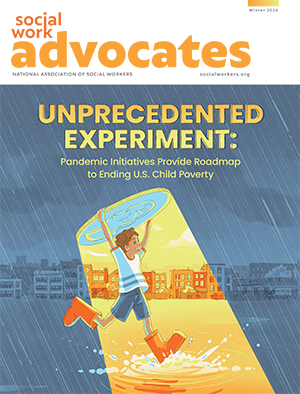By Courteney Stuart
The COVID-19 pandemic cast a dark cloud across children’s lives, interrupting education and socialization. For the poorest families in the U.S., however, there was a silver lining. The unprecedented global crisis created the political will to implement long-called-for expansions of government benefits. The March 2020 passage of the American Rescue Plan expanded the child tax credit and created other financial cushions, sending money directly to the most vulnerable families for the first time.
The sprawling legislative efforts led to a historic low in the U.S. child poverty rate in 2021 of 5.2 percent. That figure was reason to celebrate, since childhood poverty, particularly in the first six years of life, is linked to poor adult outcomes, including lower education and higher rates of mental health issues. The record-setting low quickly reversed, however, after Congress allowed the expanded benefits to expire the following year. According to a 2023 U.S. Census report, child poverty more than doubled in 2022, jumping 7.2 percentage points to 12.4 percent. The data on child poverty wasn’t the only troubling trend.
“You can see basically boomerang trends and measures of hunger, which unfortunately had dipped really low and then went right back up,” says Megan Curran, policy director at the Center on Poverty and Social Policy at Columbia University. Curran co-authored a Center study on children left behind by the child tax credit in 2022.
”The percentage of families saying that they can or cannot cover their regular expenses went down and then of course went back up,” she says.
The current child poverty and related figures are undoubtedly alarming, but the stark contrast between the data from 2021 and 2022 provides hard evidence for social workers and others who work to end child poverty about what is possible and what interventions actually work—from financial to psychosocial supports.
Read the full story at the NASW Social Work Advocates magazine




